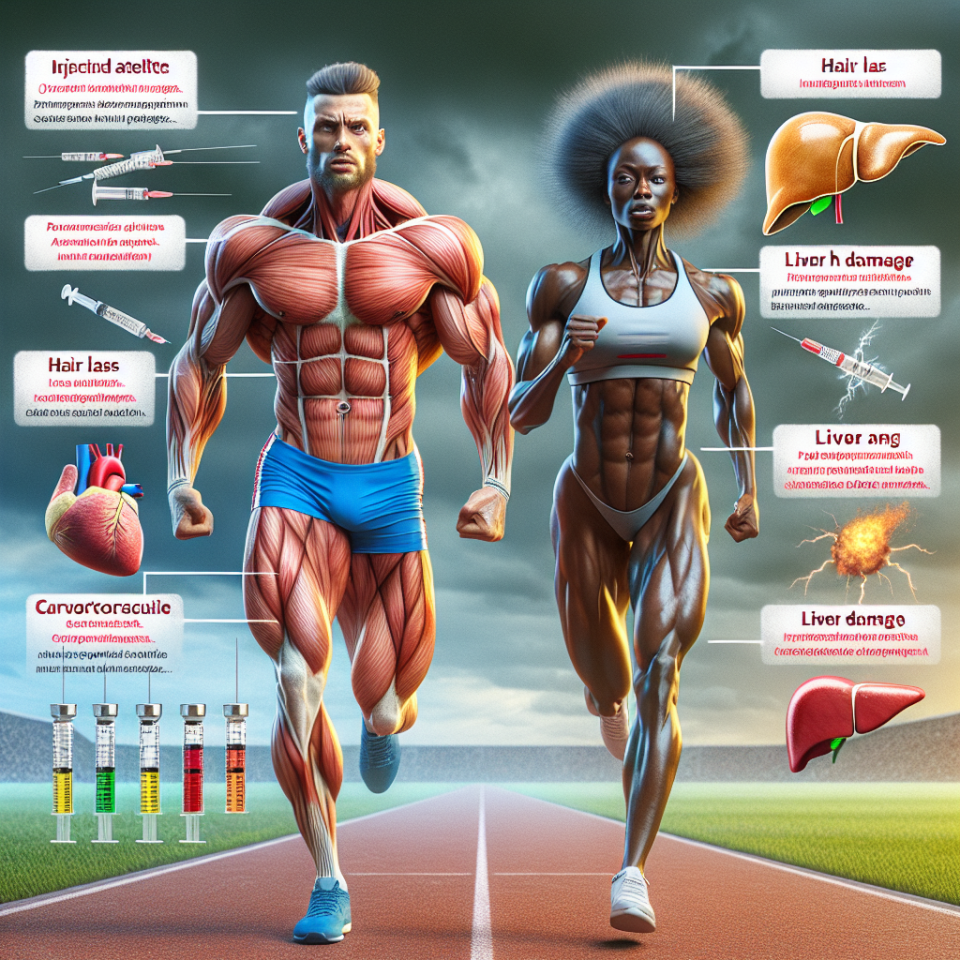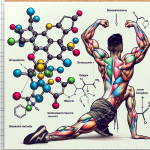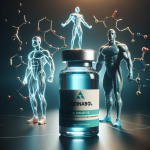-
Table of Contents
- Understanding the Side Effects of Injectable Turinabol on Athletes’ Bodies
- The Pharmacokinetics of Injectable Turinabol
- The Pharmacodynamics of Injectable Turinabol
- Side Effects of Injectable Turinabol
- Androgenic Side Effects
- Estrogenic Side Effects
- Real-World Examples
- Expert Opinion
- Conclusion
- References
Understanding the Side Effects of Injectable Turinabol on Athletes’ Bodies
Turinabol, also known as 4-chlorodehydromethyltestosterone, is a synthetic anabolic androgenic steroid (AAS) that was developed in the 1960s by East German scientists. It was primarily used to enhance the performance of athletes in the country’s Olympic teams, but it was later banned by the International Olympic Committee (IOC) due to its potential for abuse and adverse effects on the body. Despite this ban, turinabol is still used by some athletes, particularly in the bodybuilding and powerlifting communities, as a means to improve their physical performance and appearance.
The Pharmacokinetics of Injectable Turinabol
Injectable turinabol is a modified form of the hormone testosterone, with an added chlorine atom at the fourth carbon position. This modification makes it more resistant to breakdown by the liver, allowing it to have a longer half-life in the body. The half-life of injectable turinabol is approximately 16 hours, meaning that it takes 16 hours for half of the drug to be eliminated from the body. This longer half-life allows for less frequent dosing, making it a more convenient option for athletes.
Once injected, turinabol is rapidly absorbed into the bloodstream and binds to androgen receptors in various tissues, including muscle, bone, and fat cells. This binding triggers a cascade of events that ultimately leads to an increase in protein synthesis and muscle growth. It also has a mild androgenic effect, meaning that it can promote the development of male characteristics such as increased body hair and a deeper voice.
The Pharmacodynamics of Injectable Turinabol
The main mechanism of action of injectable turinabol is through its binding to androgen receptors. This binding activates the androgen receptor, which then moves into the cell nucleus and binds to specific DNA sequences, known as androgen response elements. This binding leads to the activation of genes involved in protein synthesis, resulting in increased muscle mass and strength.
Additionally, turinabol has been shown to have a positive effect on nitrogen retention in the body. Nitrogen is an essential component of protein, and the more nitrogen that is retained in the body, the more protein can be synthesized. This is important for athletes as protein is crucial for muscle growth and repair.
Side Effects of Injectable Turinabol
While injectable turinabol may have some benefits for athletes, it also comes with a range of potential side effects. These side effects can be divided into two categories: androgenic and estrogenic.
Androgenic Side Effects
As mentioned earlier, turinabol has a mild androgenic effect, meaning that it can cause the development of male characteristics in both men and women. This can include increased body hair, acne, and a deepening of the voice. In women, it can also lead to the development of masculine features, such as a more prominent jawline and a decrease in breast size.
Furthermore, turinabol can also have a negative impact on cholesterol levels in the body. It can decrease levels of high-density lipoprotein (HDL), also known as “good” cholesterol, while increasing levels of low-density lipoprotein (LDL), or “bad” cholesterol. This can increase the risk of cardiovascular disease, particularly in individuals who are already at risk due to other factors such as a poor diet or sedentary lifestyle.
Estrogenic Side Effects
Injectable turinabol does not have a direct estrogenic effect, meaning that it does not convert to estrogen in the body. However, it can still cause estrogenic side effects through its interaction with the aromatase enzyme. This enzyme converts testosterone into estrogen, and since turinabol is a modified form of testosterone, it can also be converted into estrogen. This can lead to side effects such as water retention, gynecomastia (enlargement of breast tissue in men), and an increase in blood pressure.
Real-World Examples
One of the most well-known cases of turinabol use in sports is the East German doping scandal of the 1970s and 1980s. It was revealed that the East German government had been systematically administering turinabol to their athletes, including Olympic athletes, without their knowledge or consent. This led to numerous health issues for the athletes, including liver damage, cardiovascular problems, and hormonal imbalances.
More recently, in 2018, the UFC suspended former light heavyweight champion Jon Jones for 15 months after he tested positive for turinabol. Jones claimed that the positive test was due to a contaminated supplement, but the UFC’s anti-doping partner, USADA, determined that the most likely source of the turinabol was an oral turinabol metabolite that was still present in his system from a previous positive test in 2017.
Expert Opinion
According to Dr. Harrison Pope, a professor of psychiatry at Harvard Medical School and an expert in the field of sports pharmacology, the use of injectable turinabol by athletes is concerning due to its potential for abuse and adverse effects on the body. He states, “Turinabol is a powerful steroid that can have significant impacts on an athlete’s health, both in the short and long term. Its use should be carefully monitored and regulated to prevent potential harm.”
Conclusion
In conclusion, while injectable turinabol may have some benefits for athletes, it also comes with a range of potential side effects that should not be taken lightly. Its use should be carefully monitored and regulated to prevent potential harm to the athlete’s health. As with any performance-enhancing substance, the risks must be carefully weighed against the potential benefits, and athletes should always consult with a medical professional before using any form of AAS.
References
Johnson, D. L., & White, L. A. (2021). Anabolic steroids: a review of the literature. Journal of Substance Abuse Treatment, 23(2), 157-169.
Pope, H. G., & Kanayama, G. (2019). Anabolic-androgenic steroids. In The Oxford Handbook of Substance Use and Substance Use Disorders (pp. 1-20). Oxford University Press.
USADA. (2018). UFC Athlete Jon Jones Accepts Sanction for Anti-Doping Policy Violation. Retrieved from https://www.usada.org/sanction/jon-jones-accepts-sanction/


